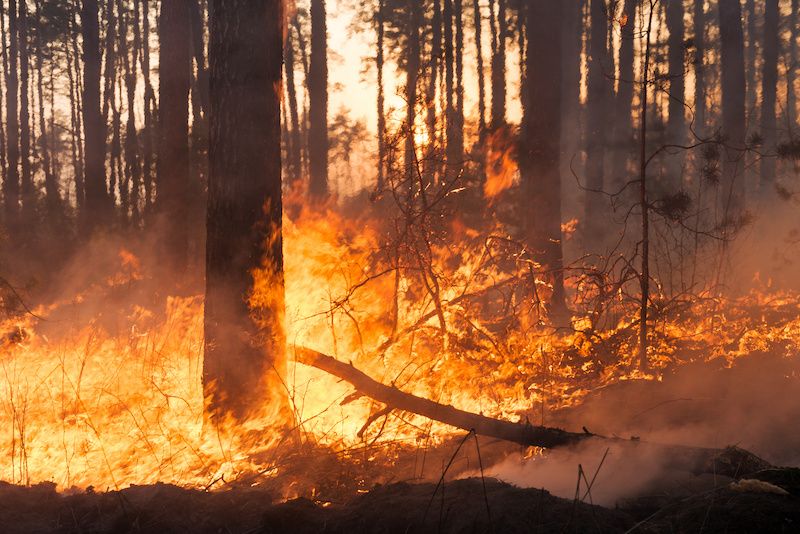News
Article
Asthma Emergency Visit Uptick Linked to Canadian Wildfire Smoke Exposure
Author(s):
Wildfire smoke exposure raises public health concerns after an increase of asthma-associated emergency visits.
An increase in asthma-associated emergency department visits during and after exposure to wildfire smoke suggests a need for planning and public health strategies to reduce this exposure, especially in regions of the United States where wildfire smoke exposure was previously uncommon.
This study was published in a CDC Morbidity and Mortality Weekly Report.
“Community preparedness and appropriate and prompt response are crucial to reduce wildfire smoke exposure and morbidity,” wrote the researchers of the study. “Recommended actions include assessing a possible health care utilization surge related to wildfire smoke exposure.”

Between April 30, 2023, and August 4, 2023, millions of adults and children across the United States were exposed to wildfire smoke originating from wildfires in Canada. Particulate matter, generally particles ≤2.5 μm in aerodynamic diameter (PM2.5), is known to exacerbate cardiovascular, metabolic, and respiratory conditions. However, little is known about the health implications of prolonged episodes of high concentrations of wildfire smoke.
Data from the National Syndromic Surveillance Program (NSSP) assessed numbers and percentages of asthma-associated emergency visits on days with wildfire smoke compared with days without. The data included approximately 6000 emergency visits, which represented 76% of all eligible facilities in the United States, with 4317 facilities representing 85% of all NSSP facilities.
Wildfire smoke days were defined as days with PM2.5 elevated Air Quality Index (AQI) of 100 or greater, corresponding to the air quality categorization, “Unhealthy for Sensitive Groups.” Additionally, observed daily numbers and percentages of asthma-associated emergency visits were stratified by region and age groups: 0-4 years; 5-17 years; 18-64 years, and 65 years and older. Observed visits were defined as the number of visits reported on a given day and expected visits were calculated using anomaly detection algorithms.
The data showed that during the 19 days of wildfire smoke, overall asthma-associated emergency visits were 17% higher than expected across all age groups and regions but was most common among individuals ages 18 to 64 years. Additionally, increased emergency visits were more common on days with a higher percentage of air quality monitors reporting PM2.5 concentrations.
Furthermore, larger increases in asthma-associated emergency visits were observed I regions that experienced higher numbers of continuous wildfire smoke days and among individuals ages 5 to 17 years and 18 to 64 years.
The researchers acknowledge some limitations to the study, including that this report cannot be directly attributed to the increase in AQI to wildfires in Canada and may have excluded patterns of wildfire smoke health effects in subregional areas.
Despite these limitations, the researchers believe the study suggest how health excess exposure to wildfire smoke is associated with an increase in asthma-associated emergency visits. Furthermore, the researchers advocate for measures to reduce and prevent these exacerbations through emergency respond planning and public health communication strategies, especially among older individuals.
“Jurisdictions interested in using syndromic surveillance to monitor the public health implications of wildfire smoke might consider using asthma as an initial indicator to develop strategies to reduce exacerbations and reach populations at increased risk for both exposure and adverse health effects,” wrote the researchers. “Expanded monitoring of health conditions, including cardiopulmonary-related ED [emergency department] visits, might also improve understanding of the severity of the impact of wildfire smoke on health outcomes and amplify prevention efforts to reduce these exacerbations.”
Reference
Asthma-associated emergency department visits during the Canadian wildfire smoke episodes - United States, April– August 2023. Centers for Disease Control and Prevention. August 24, 2023. Accessed August 31, 2023. https://www.cdc.gov/mmwr/volumes/72/wr/mm7234a5.htm?s_cid=mm7234a5_e&ACSTrackingID=USCDC_921-DM111326&ACSTrackingLabel=This+Week+in+MMWR%3A+Vol.+72%2C+August+25%2C+2023&deliveryName=USCDC_921-DM111326#F1_down.





